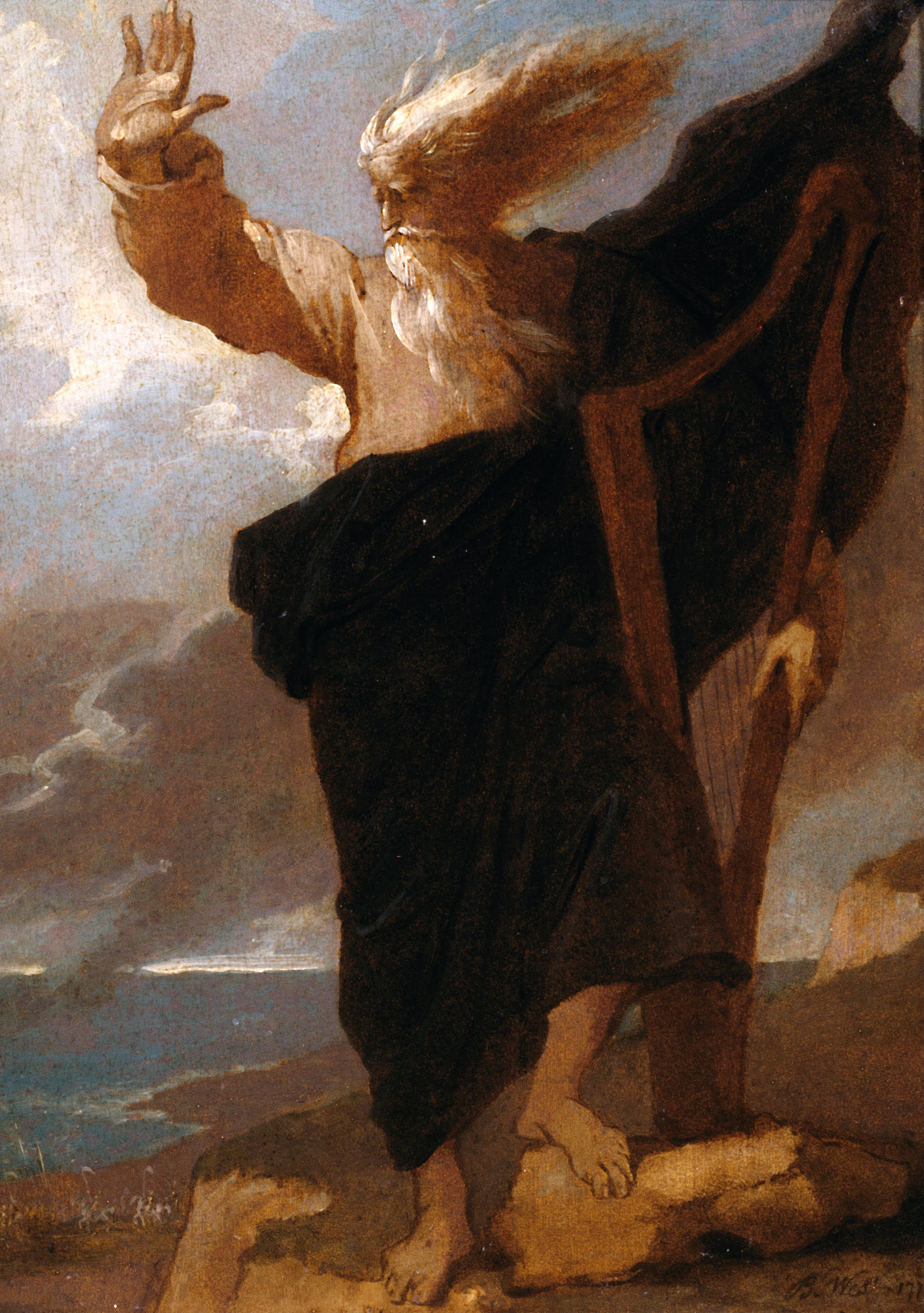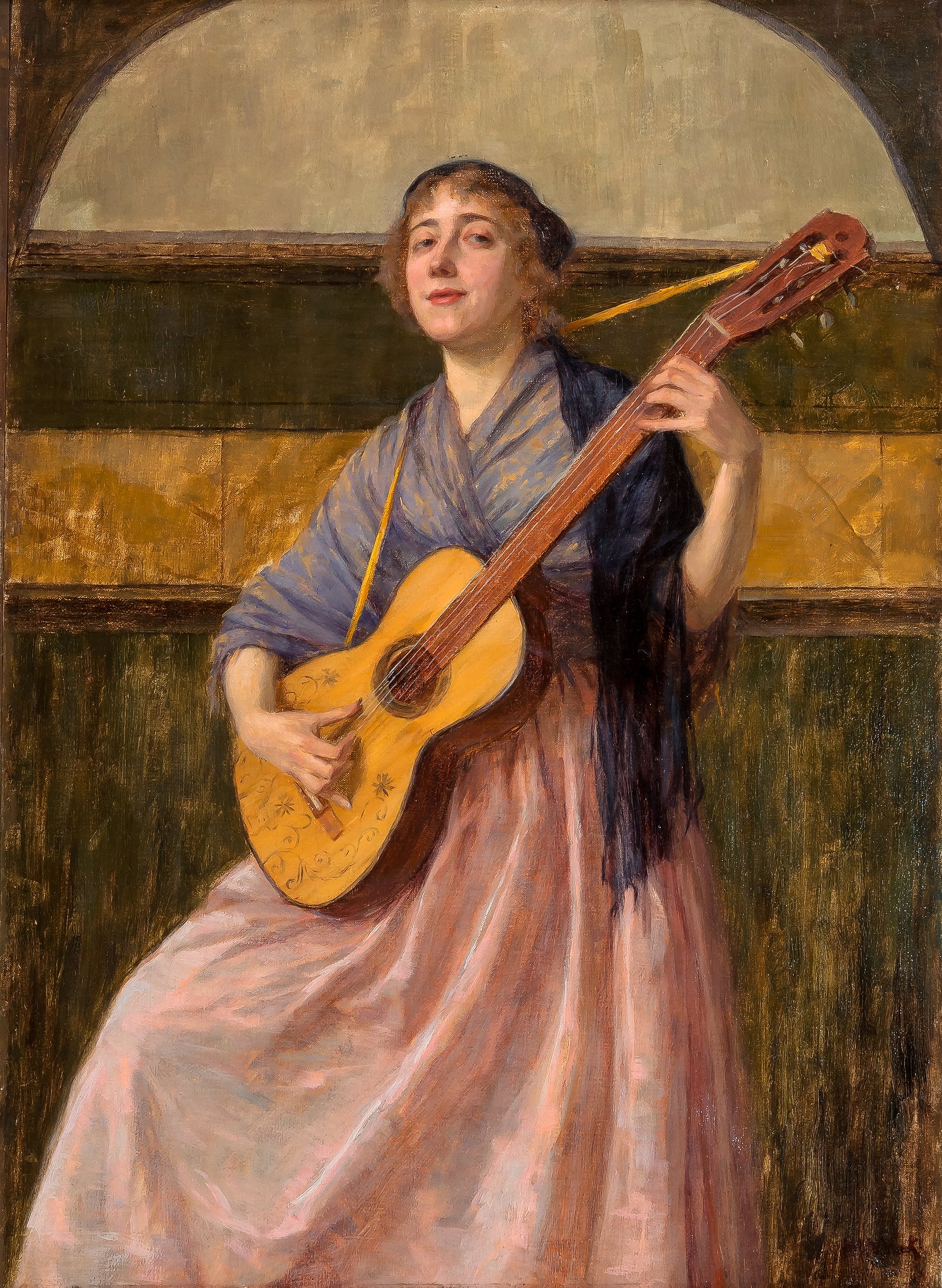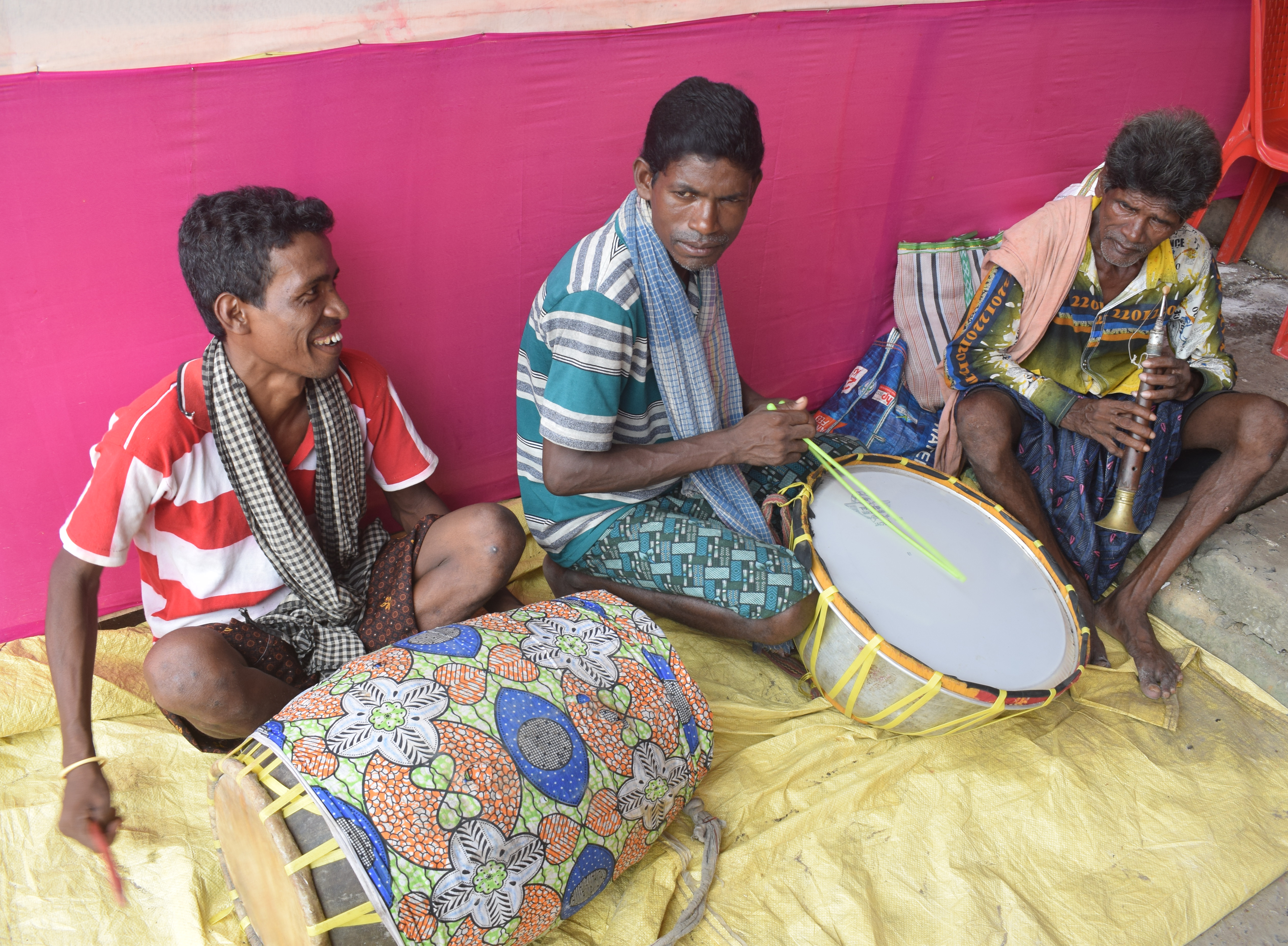|
Sindhi Bhagat
Sindhi Bhagat is a Sindhi folk art incorporating song, dance, story and drama. It is the most popular Sindhi folk form of entertainment. History Bhagat developed through the years. Its origin could be traced to the ancient bards who wandered through the countryside singing and narrating the old heroic ballads of the lovers and warriors of the olden times. The Sindhi Bhagat acquired its distinct form over a century ago, gradually developing into the current popular source of cultural entertainment. Its performances became more professional and it became a collectively created folk-art form. Performance The pivotal character in the performance is the "Bhagat", after whom the art form is named. He is the prime dancer, the storyteller, and the soul of the performance. The others are the "Boldias" (supporting players) and also the players of musical instruments such as harmonium, tabla, dholak, khanjri, etc., simple rhythmical instruments. The Bhagat combines the finer qualit ... [...More Info...] [...Related Items...] OR: [Wikipedia] [Google] [Baidu] |
Sindhi People
Sindhis are an Indo-Aryan peoples, Indo-Aryan Ethnicity, ethnic group originating from and native to Sindh, a region of Pakistan, who share a common Sindhi culture, History of Sindh, history, #History, ancestry, and Sindhi language, language. The historical homeland of Sindhis is bordered by southeastern Balochistan; the Bahawalpur Division, Bahawalpur region of Punjab; the Marwar, Marwar region of Rajasthan; and the Kutch, Kutch region of Gujarat. Sindhis are the third-largest Ethnic groups in Pakistan, ethnic group in Pakistan, after the Punjabis and Pashtuns, forming a majority in Sindh with Sindhis of Balochistan, historical communities also found in neighbouring Balochistan, Pakistan, Balochistan. They form a significant Sindhis in India, diasporic population in India, mostly Partition of India, partition-era migrants and their descendants. Sindhi diaspora is also present in other parts of South Asia; as well as in the Arab states of the Persian Gulf, Gulf states, the ... [...More Info...] [...Related Items...] OR: [Wikipedia] [Google] [Baidu] |
Folk Art
Folk art covers all forms of visual art made in the context of folk culture. Definitions vary, but generally the objects have practical utility of some kind, rather than being exclusively decorative art, decorative. The makers of folk art are typically trained within a popular tradition, rather than in the fine art tradition of the culture. There is often overlap, or contested ground with 'naive art'. "Folk art" is not used in regard to traditional societies where ethnographic art continue to be made. The types of objects covered by the term "folk art" vary. The art form is categorised as "divergent... of cultural production ... comprehended by its usage in Europe, where the term originated, and in the United States, where it developed for the most part along very different lines." From a European perspective, Edward Lucie-Smith described it as "Unsophisticated art, both fine and applied, which is supposedly rooted in the collective awareness of simple people. The concep ... [...More Info...] [...Related Items...] OR: [Wikipedia] [Google] [Baidu] |
Bard
In Celtic cultures, a bard is an oral repository and professional story teller, verse-maker, music composer, oral historian and genealogist, employed by a patron (such as a monarch or chieftain) to commemorate one or more of the patron's ancestors and to praise the patron's own activities. With the decline of a living bardic tradition in the modern period, the term has loosened to mean a generic minstrel or author (especially a famous one). For example, William Shakespeare and Rabindranath Tagore are respectively known as "the Bard of Avon" (often simply "the Bard") and "the Bard of Bengal". Oxford Dictionary of English, s.v. ''bard'', n.1. In 16th-century Scotland, it turned into a derogatory term for an itinerant musician; nonetheless it was later romanticised by Sir Walter Scott (1771–1832). Etymology The English term ''bard'' is a loan word from the Celtic languages: Gaulish: ''bardo-'' ('bard, poet'), and ('bard, poet'), ('singer, poet'), Middle Breton: ''b ... [...More Info...] [...Related Items...] OR: [Wikipedia] [Google] [Baidu] |
Ballad
A ballad is a form of verse, often a narrative set to music. Ballads were particularly characteristic of the popular poetry and song of Great Britain and Ireland from the Late Middle Ages until the 19th century. They were widely used across Europe, and later in Australia, North Africa, North America and South America. While ballads have no prescribed structure and may vary in their number of lines and stanzas, many ballads employ quatrains with ABCB or ABAB rhyme schemes, the key being a rhymed second and fourth line. Contrary to a popular conception, it is rare if not unheard-of for a ballad to contain exactly 13 lines. Additionally, couplets rarely appear in ballads. Many ballads were written and sold as single-sheet Broadside (music), broadsides. The form was often used by poets and composers from the 18th century onwards to produce lyrical ballads. In the later 19th century, the term took on the meaning of a slow form of popular love song and is often used for any love song ... [...More Info...] [...Related Items...] OR: [Wikipedia] [Google] [Baidu] |
Storytelling
Storytelling is the social and cultural activity of sharing narrative, stories, sometimes with improvisation, theatre, theatrics or embellishment. Every culture has its own narratives, which are shared as a means of entertainment, education, cultural preservation or instilling moral values. Crucial elements of stories and storytelling include Plot (narrative), plot, Character (arts), characters and point of view (literature), narrative point of view. The term "storytelling" can refer specifically to oral storytelling but also broadly to techniques used in other media to unfold or disclose the narrative of a story. Historical perspective Storytelling, intertwined with the development of mythology, mythologies, predates writing. The earliest forms of storytelling were usually oral literature, oral, combined with gestures and expressions. Storytelling often has a prominent educational and performative role in religious rituals (for example, the Passover Seder), and some archaeo ... [...More Info...] [...Related Items...] OR: [Wikipedia] [Google] [Baidu] |
Pump Organ
The pump organ or reed organ is a type of organ that uses free reed aerophone, free reeds to generate sound, with air passing over vibrating thin metal strips mounted in a frame. Types include the pressure-based harmonium, the suction reed organ (which employs a vacuum system), and the Indian harmonium. Historical examples include the ''Kunstharmonium'' and the American reed organ, while earlier forms include the physharmonica and the Seraphine (instrument), seraphine. More portable than pipe organs, free-reed organs became widespread in smaller churches and private homes during the 19th century, although their volume and tonal range were limited. They generally featured one, or occasionally two, Manual (music), manuals, while pedal keyboard, pedal-boards were rare. Higher-end pump organs offered a broader range of tones, and models intended for churches or affluent households were often housed in finely crafted Cabinet (furniture), cabinets. Between the 1850s and the 1920s, se ... [...More Info...] [...Related Items...] OR: [Wikipedia] [Google] [Baidu] |
Tabla
A ''tabla'' is a pair of hand drums from the Indian subcontinent. Since the 18th century, it has been the principal percussion instrument in Hindustani classical music, where it may be played solo, as an accompaniment with other instruments and vocals, or as a part of larger ensembles. It is frequently played in popular and folk music performances in India, Bangladesh, Afghanistan, Pakistan, Nepal and Sri Lanka.Tabla Encyclopædia Britannica The tabla is an essential instrument in the bhakti devotional traditions of Hinduism and Sikhism, such as during ''bhajan'' and ''kirtan'' singing. It is one of the main qawwali instruments used by Sufi musicians. The instrument is also featured in dance performances such as Kathak. Tabla is a rhythmic instrument. The word ''tabla'' likely comes from ''tabl'', the Arabic word for drum. [...More Info...] [...Related Items...] OR: [Wikipedia] [Google] [Baidu] |
Dholak
The ''dholak'' is a two-headed hand drum, a folk percussion instrument. The dholak is most commonly recognised in countries such as India, Pakistan, Bangladesh, Nepal and Sri Lanka, but can also be found amongst the Indo-Diaspora in countries such as Guyana, Suriname, Fiji, Trinidad and Tobago, South Africa and Mauritius. The dholak can be anywhere about 16" to 24" in length. It is widely used in ''qawwali'', ''kirtan'', ''bhajan'', ''Bhangra (music), bhangra'', ''Chutney music, chutney'', ''Baithak Gana, baithak gana'', ''Hindi film music'', ''lokgeet'' and various classical styles such as ''Hindustani classical music, Hindustani'', ''Carnatic music, Carnatic'' and ''trinidadian local classical / guyanese taan, Trinidadian local classical / Guyanese taan''. The drum has two different sized drumheads. There is a smaller drumhead that can be from 5.5 to 8 inches in diameter and is made for sharp notes while the bigger drumhead, which can be from 7.5 to 10 inches in diametre, is ma ... [...More Info...] [...Related Items...] OR: [Wikipedia] [Google] [Baidu] |
Mass Media
Mass media include the diverse arrays of media that reach a large audience via mass communication. Broadcast media transmit information electronically via media such as films, radio, recorded music, or television. Digital media comprises both Internet and mobile mass communication. Internet media comprise such services as email, social media sites, websites, and Internet-based radio and television. Many other mass media outlets have an additional presence on the web, by such means as linking to or running TV ads online, or distributing QR codes in outdoor or print media to direct mobile users to a website. In this way, they can use the easy accessibility and outreach capabilities the Internet affords, as thereby easily broadcast information throughout many different regions of the world simultaneously and cost-efficiently. Outdoor media transmits information via such media as augmented reality (AR) advertising; billboards; blimps; flying billboards (signs in tow of airpl ... [...More Info...] [...Related Items...] OR: [Wikipedia] [Google] [Baidu] |
Kirat Babani
Kirat Choithram Babani AKA Kirat Babani, (; 3 January 19227 May 2015) was a writer, journalist and progressive activist of Sindhi language and nation. He had written several books and articles, remained editor in newspapers and magazines, won multiple awards from Government and non-governmental organizations. He died on 7 May 2015 in Mumbai, India. Education Kirat Babani had got matriculation certificate from Wills School (Now branch of M. H. Khuwaja Branch School) Nawabshah, Bachelor of Arts from D. G College and Bachelor of Laws from Shahani Law College (now Sindh Muslim Law College) Karachi. Ideology Kirat Babani, doyen and one of the few living old guards of Sindhi nation, had made outstanding contributions in the field of literature, journalism and education. Kirat was a man of many images. He believed that literature had a purpose. The writer need not be committed to creed, but he had a commitment to life and should portray the life as honestly as possible. Apart from his c ... [...More Info...] [...Related Items...] OR: [Wikipedia] [Google] [Baidu] |
Sindhi Language
Sindhi ( ; or , ) is an Indo-Aryan language spoken by more than 30 million people in the Pakistani province of Sindh, where it has official status, as well as by 1.7 million people in India, where it is a Scheduled languages of India, scheduled language without state-level official status. Sindhi is primarily written in the Perso-Arabic script in Pakistan, while in India, both the Perso-Arabic script and Devanagari are used. Sindhi is a Northwestern Indo-Aryan languages, Northwestern Indo-Aryan language, and thus related to, but not mutually intelligible with, Saraiki language, Saraiki and Punjabi language, Punjabi. Sindhi has several regional dialects. The earliest written evidence of modern Sindhi as a language can be found in a translation of the Qur’an into Sindhi dating back to 883 AD. Sindhi was one of the first Indo-Aryan languages to encounter influence from Persian language, Persian and Arabic following the Umayyad campaigns in India, Umayyad conquest in 712 AD. A ... [...More Info...] [...Related Items...] OR: [Wikipedia] [Google] [Baidu] |







